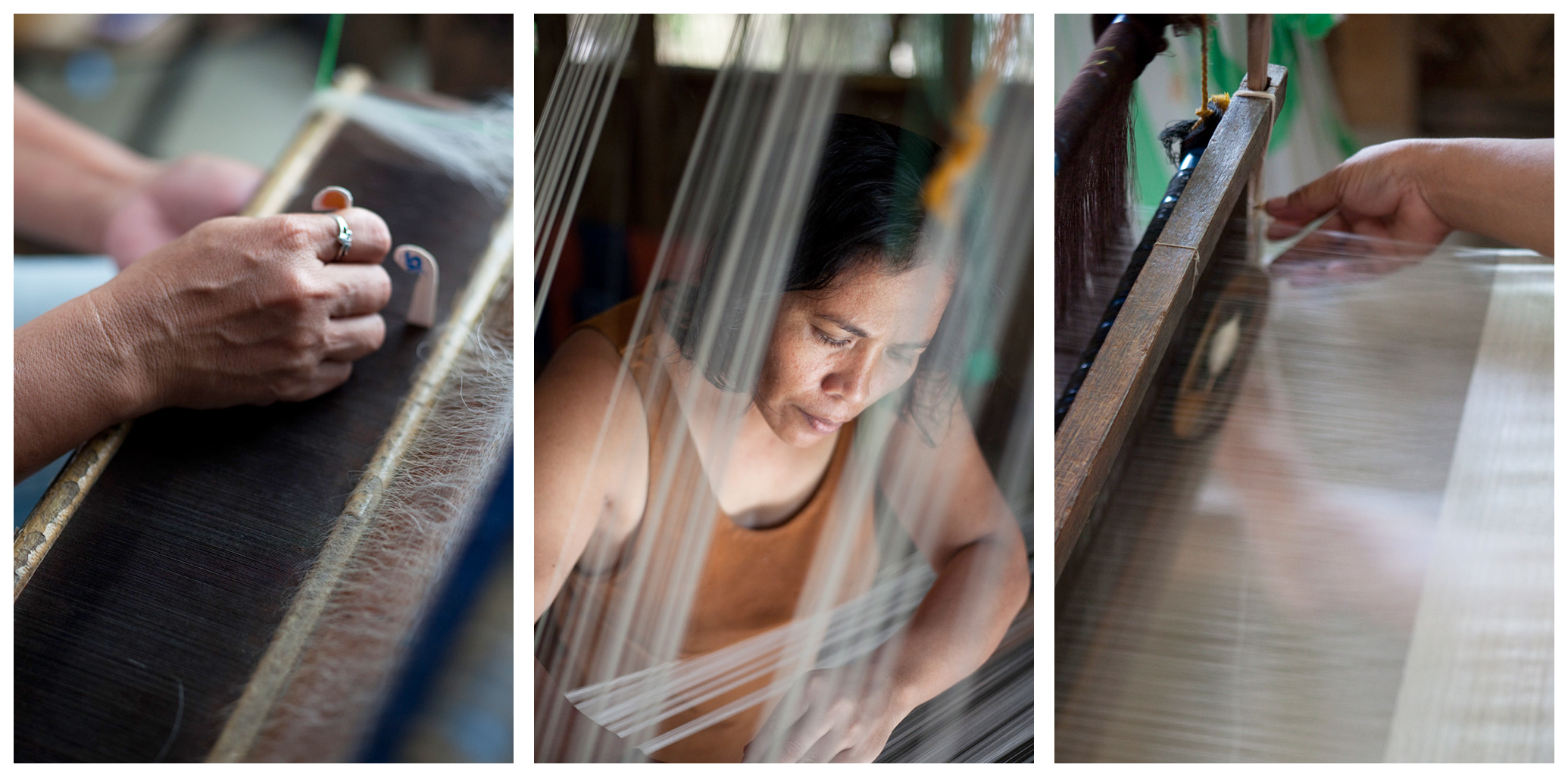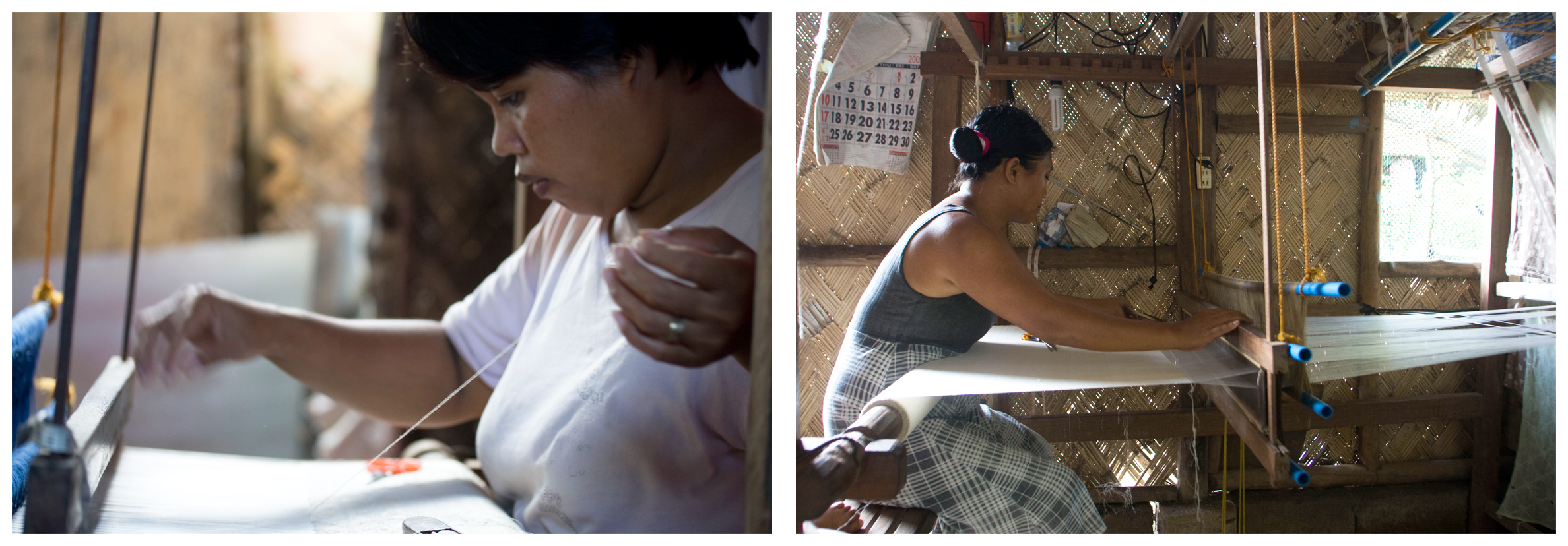Weaving experts from the province of Aklan were brought in to train the locals in year 2000. From the initial batch of trainees Rurungan identified and trained a pool of local weavers who now pass on the skill to others. To date, close to one hundred women weavers weave on a regular basis and earn income from this developing industry.

RSTF then developed a training program, in the main center as well in other communities, on the extraction, processing and weaving of piña and other endemic fibers like abaca, pandan, rattan and many others.
Hands-on training focuses on the extraction, processing, knotting, warping and weaving of local fibers into fine clothing and home accessories.
After the weaving trainings, RSTF trainers do regular monitoring visits to the centers to ensure the quality of the woven products, teach new designs and techniques to the weavers, upgrade their skills and help facilitate the team building and leadership activities in the centers. By this time, it is expected that the output of the weavers would have already increased and they would be earning P 120-160 per day. The knotters will also be earning almost the same amount per day. The trainers will also assist the primary weavers in the training of new participants or secondary weavers.

RSTF is harnessing the strengths of the rurungan organizational model to form a network of pocket-weaving houses across the province. With this indigenous sisterhood, it becomes easy for us to expand our network. In most cases the ates (elder sisters) volunteer to undertake training for their recruits, creating a strong bond between them that helps sustain the whole network. This system encourages trust, forming a strong linkage between these women, becoming the platform in which the sharing of the weaving technology becomes easier.
Through this model, the technological know-how is passed on from the initial group of women who act as the decision-making body to another set of woman recruits. These recruits then become experts and would repeat the same process of recruitment and instruction until a vertical production linkage is formed. The downward transference of knowledge is motivated by their sense of community and the promise that as the network expands, their production capacity and earning capability increase as well.
